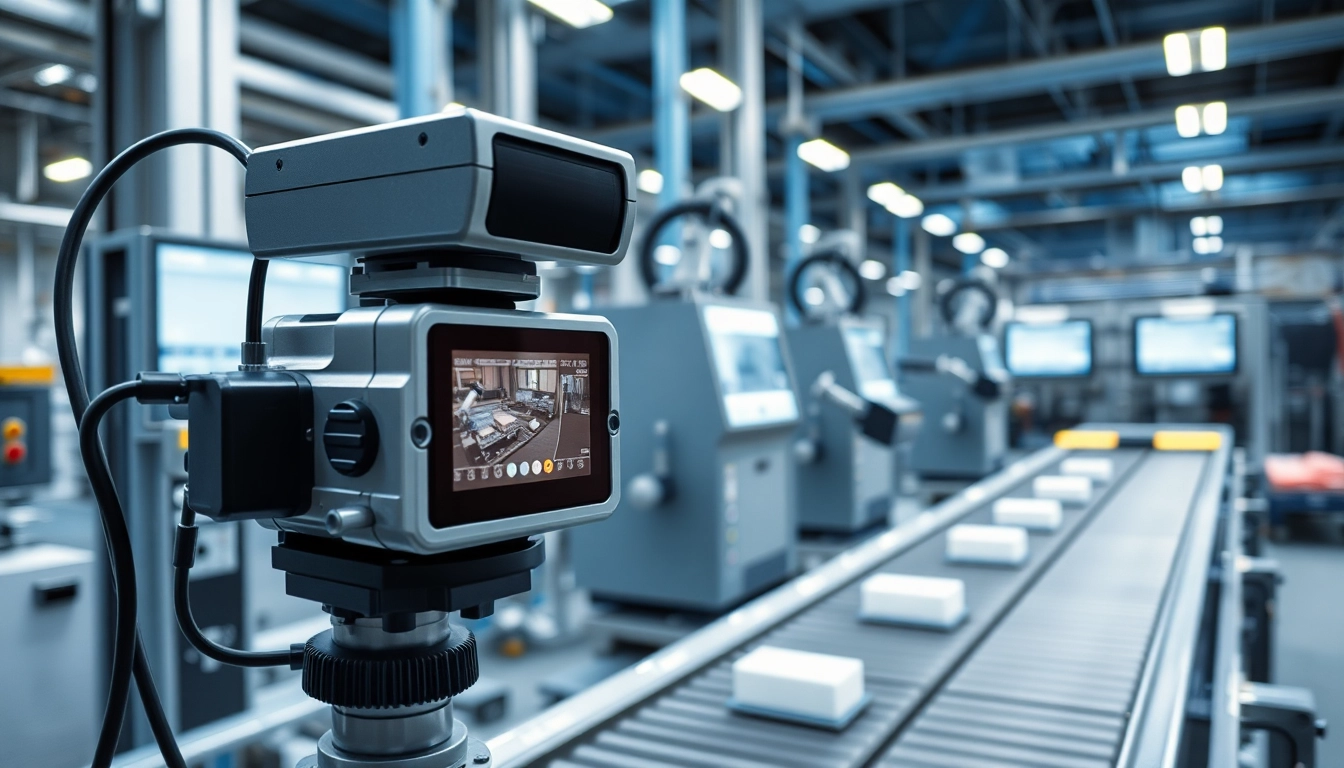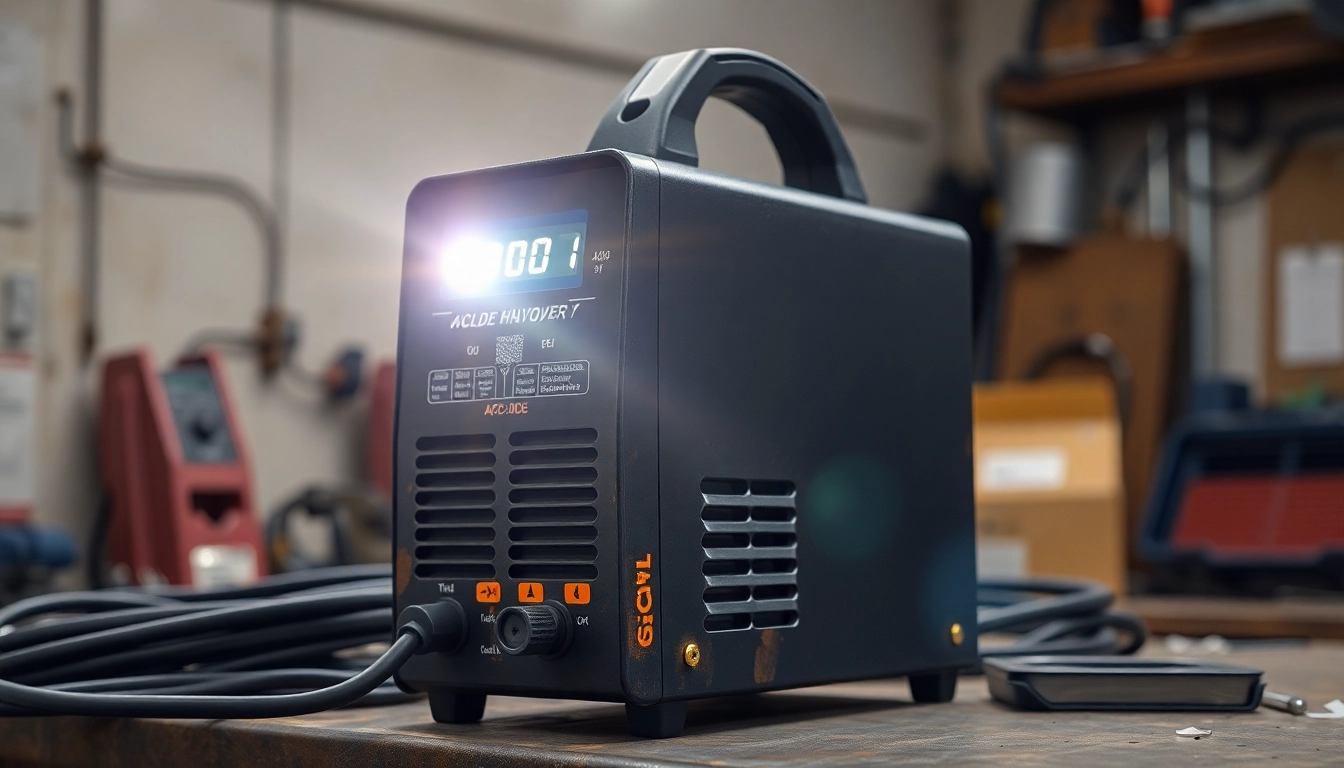What is Machine Vision?
Definition and Key Concepts
Machine vision refers to the technology and methods that enable computers to interpret and understand visual information from the world. It encompasses a combination of hardware components, primarily cameras and sensors, and software applications that process and analyze the captured images. The primary goal of machine vision is to automate tasks traditionally performed by the human eye, offering enhanced speed, accuracy, and reliability in various applications.
According to machine vision systems, the ability to capture visual data, process it, and make decisions based on predefined criteria creates a foundation for numerous industrial applications, ranging from quality control to guidance systems in robotics and beyond.
How Machine Vision Works
Machine vision operates by capturing images through cameras, followed by several processing steps designed to extract meaningful information. The basic processes include:
- Image Acquisition: This is the initial phase where cameras and lighting systems obtain images from the environment. The quality of the images directly affects the system’s ability to process them effectively.
- Image Processing: Once images are acquired, they undergo various algorithms to enhance, filter, and segment the data. This step is crucial for identifying specific features within the image, such as edges, textures, or colors.
- Analysis and Interpretation: In this phase, machine vision software applies machine learning and artificial intelligence techniques to interpret the processed images. This may involve comparing images against a database, recognizing patterns, or detecting anomalies.
- Decision Making: Based on the interpretation results, the system generates outputs that could trigger actions, such as identifying defects in products, providing feedback for adjustments, or guiding robotic arms in assembly lines.
Common Applications in Industry
Machine vision is widely adopted across various industries, demonstrating its versatility and effectiveness. Some common applications include:
- Quality Control: Machine vision systems are extensively employed for inspecting products in real-time, checking for defects, ensuring compliance with specifications, and rejecting faulty items.
- Assembly Verification: In manufacturing, machine vision is used to verify correct assembly by checking alignment, orientation, and completeness of components.
- Barcode Reading: Optical character recognition and barcode scanning technology leverages machine vision, ensuring accuracy in inventory management and shipping processes.
- Robotics Guidance: In environments where robots operate, machine vision assists in understanding their surroundings, allowing navigation and interaction with various objects.
- Medical Imaging: The medical field utilizes machine vision for analyzing images like X-rays or MRI scans to assist in accurate diagnostics and treatment planning.
Benefits of Implementing Machine Vision
Improving Quality Control
One of the most significant benefits of machine vision is its capacity to enhance quality control processes. Human operators are prone to fatigue and oversight, but machine vision systems maintain consistent performance and accuracy. By integrating these systems, businesses can:
- Reduce the rate of defective products reaching customers.
- Document inspection results for compliance and quality assurance records.
- Implement continuous monitoring, allowing for adjustments before defects occur.
Increasing Operational Efficiency
The automation of visual inspection and analysis through machine vision significantly improves operational efficiency. This technology enables faster processing speeds than manual inspections, leading to:
- Shorter production cycles and increased throughput.
- Minimized downtime caused by mistakes and rework.
- A streamlined workflow that reduces labor costs associated with manual inspections.
Cost Reduction and ROI
Implementing machine vision systems can lead to substantial cost reductions in various aspects of production and quality management. Key financial benefits include:
- Lower operational costs due to reduced labor and training expenses.
- Minimized waste and scrap rates as faulty products are identified early.
- Improved efficiency translates to increased profitability and better return on investment (ROI) over time.
Types of Machine Vision Systems
1D, 2D, and 3D Vision Systems
Machine vision systems can be categorized based on dimensionality, each suited for specific applications:
- 1D Vision Systems: These systems are typically used for linear measurements and scanning barcodes. They analyze one-dimensional data, which is sufficient for many applications in logistics and manufacturing.
- 2D Vision Systems: Utilizing two-dimensional imaging, these systems are common for tasks such as surface inspection and object recognition. They capture a flat image, which is then analyzed by algorithms to detect features and defects.
- 3D Vision Systems: 3D systems provide depth perception, allowing for more complex image analysis. They are instrumental in applications such as robotic picking, where understanding the three-dimensional layout of objects is critical.
Optical Technologies in Machine Vision
The effectiveness of a machine vision system heavily relies on the optical technology employed within it. Key technologies include:
- Standard Cameras: CCD (Charge-Coupled Device) and CMOS (Complementary Metal-Oxide-Semiconductor) cameras are prevalent, offering high image quality and resolution.
- Line Scan Cameras: Best suited for continuous production lines, these cameras capture images in a linear fashion, enabling the inspection of long objects.
- Thermal Cameras: Used for detecting heat variations, thermal cameras can be valuable in quality control processes, especially in electronics manufacturing.
- Specialized Lenses: Custom lenses can affect the field of view and depth of focus, enhancing imaging capabilities based on specific application needs.
Choosing the Right System for Your Needs
Selecting the appropriate machine vision system involves an assessment of several factors, including:
- The specific needs of your application, such as the type of inspection or analysis required.
- Environmental conditions, such as lighting and space limitations.
- The budget for initial investment and ongoing operational costs.
Engaging with machine vision experts can also provide invaluable guidance in making informed decisions tailored to unique operational requirements.
Challenges in Machine Vision Implementation
Common Technical and Operational Issues
While machine vision technology presents numerous advantages, certain challenges await in its implementation. Common issues include:
- Integration with Existing Systems: Aligning new machine vision solutions with preexisting workflows and technologies can be complex and may require customization.
- Calibration and Setup: Achieving optimal performance necessitates meticulous calibration, which can be time-consuming and require specialized knowledge.
- Component Failures: Mechanical or software issues can arise, disrupting operations. Proper maintenance and redundancy strategies are essential to mitigate this risk.
Data Processing and Integration Challenges
Data volume generated by machine vision systems can be overwhelming. Challenges in this area include:
- Data Management: Managing vast amounts of data while ensuring efficient storage and retrieval can be demanding.
- Interfacing with Other Systems: Successful data integration with other control systems and software requires compatibility and effective communication protocols.
Solutions and Best Practices
To address implementation challenges, several proven strategies can be employed:
- Thorough Planning: Conducting a comprehensive analysis of needs prior to investing in machine vision allows for the selection of appropriate technologies and systems.
- Continuous Training: Providing personnel with ongoing training ensures they can effectively operate and manage machine vision systems.
- Regular Maintenance: Implementing routine checks and maintenance protocols can help safeguard against technical failures and prolong system integrity.
Future Trends in Machine Vision Technology
Impact of AI and Machine Learning
Artificial intelligence (AI) and machine learning are at the forefront of advancements in machine vision technology. These fields foster increased automation and more intelligent decision-making capabilities. By integrating AI, future machine vision systems can:
- Learn and adapt from new data patterns, resulting in improved accuracy over time.
- Predict maintenance needs before failures occur, bolstering operational efficiency.
- Extend capabilities beyond standard tasks, opening opportunities for innovative applications in emerging industries.
Advancements in Imaging Technology
Rapid developments in imaging technology significantly influence the capabilities of machine vision systems. New innovations include:
- Higher Resolution Imaging: Improvements in camera technology allow for greater detail in visual data, beneficial for intricate inspection processes.
- Enhanced Light Sources: Advanced LED technologies are improving illumination quality, thus enhancing image acquisition in various environments.
- Miniaturization: Smaller, more efficient components lead to more compact systems that can be integrated into tighter spaces.
Predictions for Industry Growth and Adoption
The global market for machine vision technology is expected to experience significant growth in the coming years, driven by:
- Increasing automation across industries like manufacturing, logistics, and healthcare, where machine vision offers compelling productivity gains.
- Rising demand for quality assurance and inspection as supply chains become more competitive.
- Advancing technological sophistication, improving accessibility and lowering costs of high-performance systems.



